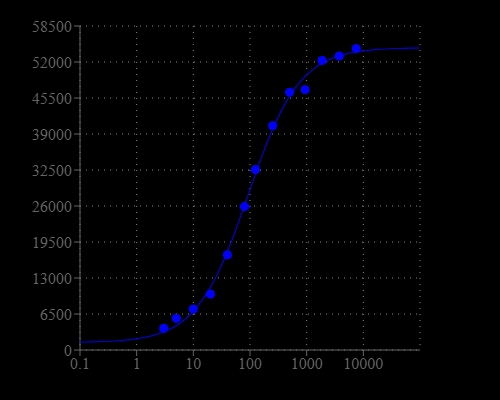The intracellular calcium flux assay is a widely used method in monitoring signal transduction pathways and high throughput screening of G protein-coupled receptors (GPCRs) and calcium channel targets. Following the introduction of Fluo-3 in 1989, Fluo-4, Fluo-8®, and Cal-520® were later developed with enhanced signal-to-background ratios and soon became the Ca2+ indicators of choice for confocal microscopy, flow cytometry, and high throughput screening applications. However, there are still a few caveats with Fluo-4. For example, like Fluo-3, Fluo-4 exhibits poor intracellular retention, and the use of probenecid is required to prevent the cell-loaded Fluo-4 from leaking out of cells. The use of probenecid with Fluo-4-based calcium assays compromises the assay results since probenecid is well-documented to have a variety of complicated cellular effects. Calbryte™ 520L, AM is a new fluorescent and cell-permeable calcium indicator. Like other dye AM cell loading, Calbryte™ 520L AM ester is non-fluorescent, and once it gets inside the cell, it is hydrolyzed by intracellular esterase and gets activated. The activated indicator is a polar molecule that is no longer capable of freely diffusing through the cell membrane and is essentially trapped inside cells. Calbryte™ 520L has a low affinity to calcium ions with a Kd ≤ 91 µM. Calbryte™ 520L produces a bright fluorescence signal in the presence of calcium at high concentrations. It has the identical excitation and emission wavelength as Fluo-4; thus, the same Fluo-4 assay settings can be readily applied to Calbryte™ 520L-based calcium assays.


| Catalog | Size | Price | Quantity |
|---|---|---|---|
| 20640 | 10x50 ug | Price |
| Dissociation constant (Kd, nM) | 91000 |
| Molecular weight | 870.72 |
| Solvent | DMSO |
| Excitation (nm) | 493 |
| Emission (nm) | 515 |
| Quantum yield | 0.75 1 |
| H-phrase | H303, H313, H333 |
| Hazard symbol | XN |
| Intended use | Research Use Only (RUO) |
| R-phrase | R20, R21, R22 |
| Storage | Freeze (< -15 °C); Minimize light exposure |
| UNSPSC | 12352200 |
| Fluorescence microscope | |
| Excitation | FITC |
| Emission | FITC |
| Recommended plate | Black wall/clear bottom |
| Fluorescence microplate reader | |
| Excitation | 490 |
| Emission | 525 |
| Cutoff | 515 |
| Recommended plate | Black wall/clear bottom |
| Instrument specification(s) | Bottom read mode/Programmable liquid handling |
| Telephone | |
| Fax | |
| sales@aatbio.com | |
| International | See distributors |
| Bulk request | Inquire |
| Custom size | Inquire |
| Technical Support | Contact us |
| Request quotation | Request |
| Purchase order | Send to sales@aatbio.com |
| Shipping | Standard overnight for United States, inquire for international |

